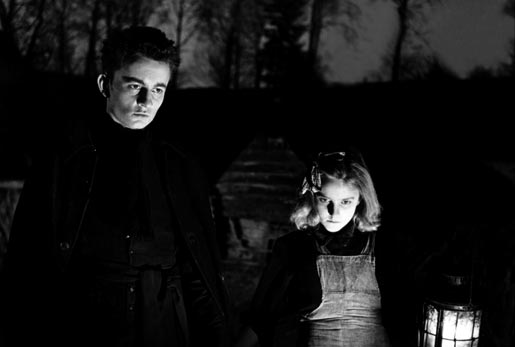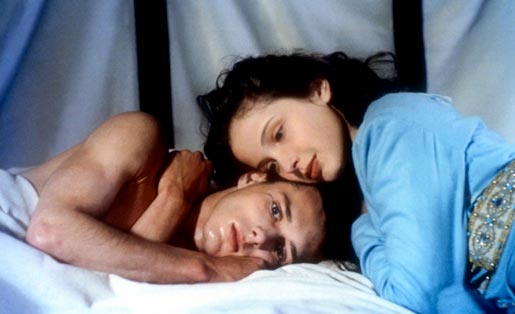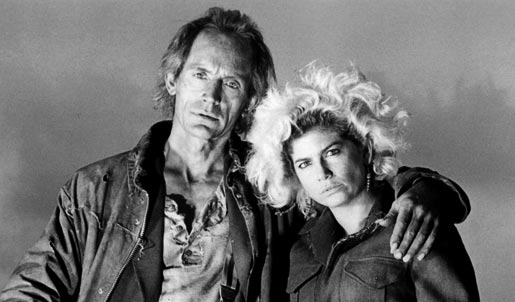An Interview with Todd Grimson
Todd Grimson’s Stainless, one of the best and more unjustly ignored vampire novels ever written, is something of a cult classic that still pops up regularly in blogs and message boards whenever a new reader gets ahold of a copy and gets blown away by its sheer intensity and its raw and bloody romanticism. I recently interviewed Todd à propos of the Spanish release of his novel; finding an interview with him it’s almost impossible even on the Web, so I thought I should post it here in English. Hope somebody enjoys it.
 |
 |
Left: English Cover. Right: Spanish Cover.
Oscar Palmer: It’s been thirteen years since Stainless was originally published. How do you perceive the changes experimented by American pop culture since then, and how do you think Stainless stands against this last wave of defanged and desexed vampires?
Todd Grimson: I haven’t watched any of the new vampire fare. So maybe it’s better than I think. Though not from what I hear. I thought to myself at the time that Stainless basically ended the genre, that it was the last and the greatest vampire novel ever. It sounds absurd, but I don’t mind sounding absurd.
OP: There’s vampires in Stainless and zombies in Brand New Cherry Flavor. What did using both of these pop horror icons allowed you as a writer?
TG: I started out (BNCF was written first) trying to organize what I accomplished sometimes in my short fiction… trying to work the “waking dream” quality I thought I occasionally achieved… into the longer form. I developed the idea of what I then saw as “cinematic realism.” This has an obvious relation to “magical realism” – at its most basic, you might call it Life + Special Effects. Given that our modern imaginations have been so infected by the language and vocabulary of film, and that my own dreams are vivid and cinematic, this all seemed to make sense. Stainless originated in a dream; as I worked on the novel the original vision was reinforced by other dreams making use of the images obsessing me by then.

Robert Bresson’s Diary of a Country Priest.
OP: Were you deliberately attempting to redefine or deepen vampire lore, or was this just a mean to an end, a good way of giving an edge to what could have otherwise been a simple love story?
TG: I wanted to write the Final, Ultimate Vampire Novel. I read all that was out there, brooded for a month. Anne Rice in Interview With a Vampire has three vampires living in early 19th century New Orleans, each supposedly killing one person each – every night. That’s over a thousand corpses a year when the population of that city was much less than today. And no one notices?! I thought this was ridiculous, and, worse than ridiculous, uninteresting. How much blood would one need per day? I have worked in a surgical intensive care unit, I was and am intimately familiar with blood and death. What if the vampire avoided the obvious bitemark on the throat, possessed some mild hypnotic power, was not as strong as a superhero, and only took enough blood to live? Say a bowl of soup’s worth? The bitten would most often survive. I discussed the possible issues with a physician I knew. There is a medical condition which requires frequent transfusions, another in which a patient may be hypersensitive to the ultraviolet light of the sun. It’s been postulated that the accumulation of “heavy water” in the body is what causes aging and eventual death, Maybe a disease might have a side-effect which is positive, perhaps something offbeat in the spleen or the thyroid reregulating the organism? It’s not completely impossible. It may not be likely, but for my purposes such hypotheses at least moved us closer to something real. There is minimal if any invocation of supernatural power in this book. Justine can be killed. And you do not instantaneously die when her teeth touch your neck. Rattlesnake venom is not even so fast as that.
OP: You use quite a lot of characters and situations for such a short novel, creating almost a mosaic of narratives. Some of them, like the fifties episode with the police detective or the shooting of the vampire movie in 1969 almost seem like complete short stories. Was this hard to manage without losing sight of the main storyline? And was this fragmentation always part of your original plan or did it grow as you went along?
TG: I didn’t want Justine to have 400 year old eyes. There’s no vulnerability in that, no capacity for some survival of the child within. Justine is fragile in some ways, and this also makes her more sexy. She suffers from some amnesia. The past is like a dream. It’s also important that she believes in God. When you believe in God you experience it much more acutely if you come to believe you are damned. The flashback scenes showed us to some extent a different Justine. I mimicked the language and mood of Poe, then for 1950s Los Angeles I used some heightened notion of the James Ellroy one finds in The Black Dahlia. The 1960s scene is the Pynchon of V. and my memories of such films as The Trip — gone cruel.

Bertrand Tavernier’s The Passion of Beatrice, starring Julie Delpy.
OP: Your writing in Stainless is very sparse but oddly poetic. Did you have to labour a lot to get this balance?
TG: I only sought to be precise. I don’t think my prose tends in general to be “purple” – I’m not a big fan of the author showing off. That sort of prose comes between the reader and the nudity of what is being shown.
OP: How important was to you that Keith should be a musician? And why? I love that he thinks a lot about sounds, and the way he wishes to play just one infinite note stroke me as very genuine.
TG: I have played a lot of music myself. I played the piano. I once gave piano recitals, and also was in a band. Then I suffered nerve damage to my left hand. So this all came from experience. Keith’s injured hands… I felt I knew what that was like. And meanwhile, I usually write with headphones on, listening to something very loud…and then I have no memory of what it is I have heard.
OP: It seems to me as if Stainless is now like a time capsule of the nineties, not because is dated in any way but because it encapsulates perfectly a time and a place. I don’t know whether you’ll agree with that perception at all, but I’d like to know what were you seeing around you at the moment of writing, that led you or inspired you to create the ambiance that permeates the novel.
TG: I wrote it right after Brand New Cherry Flavor, which is more satirical, less emotional. It seemed like a continuation of that novel in some ways. Some of my friends became heroin addicts, so I suppose that influenced me, just because it was all around. I’ve scored drugs with more experienced junkies. Once I committed myself to the project and saw this as a milieu that I could live in, the goth kids and so on just fell into place out of all those I saw or knew. But I wasn’t trying to make a grand statement about the times. I was always, always, asking myself “Does this make sense?” And I was trying to really understand Justine, who is not a modern young woman. To that end I immersed myself in Georges Bernanos’ novel Diary of a Country Priest (and the film made of this by Robert Bresson), and I watched Bertrand Tavernier’s The Passion of Beatrice easily more than one hundred times. The last sixteen minutes of that film portrays a mysterious, perfect ritual that moved me every time, often to actual tears. And then I would write, after the close-up of her face when she is lost, she realizes she is forever damned.

Lance Henriksen and Jennette Goldstein in Near Dark.
OP: If I’m not mistaken, you did sell the film rights for Stainless, but as far as I know, nothing came of that. Did Hollywood screw you as anybody else?
TG: Lise Raven, an independent filmmaker, wrote a treatment, and kept trying for several years. The big studios all kept saying they each had their own vampire film in development. Lise Raven – and my Hollywood agent, Lisa Callamaro, would say “But wait, this would be the ultimate, this gives you everything and anything you’ve ever thought you might get from the vampire mythos!” I still hope there might be a film, both because I hope such a film might be great – and because a film might bring more people to read the book. Sigourney Weaver and 20th Century Fox took an option on Brand New Cherry Flavor, which gave me more money – but would probably be a much more difficult film to make. Stainless is right there. Just use the dialog in the book. There’s no need for expensive CGI. Use unknowns and keep it simple and direct.
OP: Since we’re talking about film, name your three favorite vampire movies
TG: Near Dark; Count Yorga, Vampire; Bram Stoker’s Dracula (w/Gary Oldman).
- If you live in a country where Spotify is licensed, be sure to check this selection of tunes handpicked by Todd as the perfect soundtrack for Stainless.
